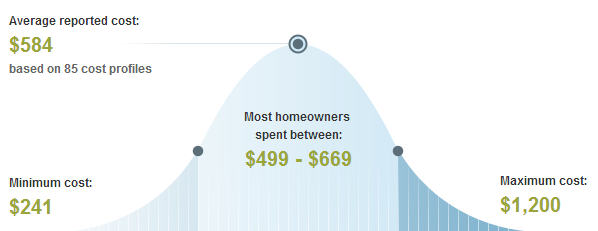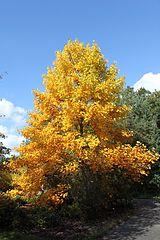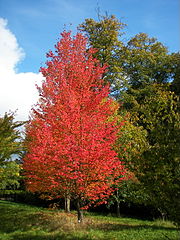Skip to a section:
- Costs – Allentown tree maintenance, removal or stump removal costs vary depending on different factors. See what they take into account so you know what you’re paying for.
- FAQs – Pennsylvania’s sprawling landscape includes many trees that homeowners can plant in their own yard, as long as they know which ones thrive and how to care for them. Learn more about city rules, native trees and pests to be aware of.
- Services – Which tree care specialist is near you? We have a whole list of Allentown professionals.
How Much Do Tree Services Cost in Allentown?
The cost of tree services in Allentown, Pennsylvania, is as variable as the tree and service in question. A very large tree — like an oak or sycamore — that must be clear-cut will cost its owner considerably more than a smaller tree that only needs to be trimmed up to preserve its health and appearance.

Average Tree Maintenance & Removal Costs in Allentown
The average cost to trim or remove a tree in Allentown is $584. While most people won’t need to spend more than $670, the largest trees in the area could cost owners more than $1,000 to remove.
Stumps are much cheaper to remove than trees. A medium-sized or large stump in Allentown costs between $108 and $111 to remove and grind up. This includes the cost of grinding equipment.
It costs homeowners less to maintain their trees than to have them removed altogether. Maintaining most trees costs several hundred dollars. You can expect to pay approximately $280 to $415 for routine maintenance services like crown thinning or branch trimming.
Project Specifications & Labor Costs
Tree size and the service needed shape the final bill. Other variables, like a tree’s location, are nearly as important as its size. Location is related to danger. Trees near utility lines, for instance, are more dangerous. The higher the safety risks, the higher the price.
The relative difficulty or complexity of the project is also important. Does it require substantial rope work, sensitive handling or special equipment? If so, you may pay more. Keep in mind that difficult projects may take longer to complete, driving up labor costs.
Some contractors or firms cost more than others. While it may be tempting to simply opt for the cheapest one, pricier professionals are often more experienced, capable and insured in the event of an accident. It’s important to balance cost concerns with quality of care.
Allentown Tree Facts & FAQs
The name Pennsylvania comes from the Latin term ‘Sylvania,’ meaning woodlands. True to its namesake, Pennsylvania has a rich repertoire of native trees, including many species that can be cultivated by residents. The official state tree is the eastern hemlock. Thriving in the cool, humid climate of Eastern Pennsylvania, the hemlock grows slowly and can live for more than 800 years. It is a popular landscaping tree in Allentown.
Native Local Trees
 Allentown, situated in the Lehigh Valley, is home to many of Pennsylvania’s 133 native deciduous and evergreen tree species. There were more than 14,000 sidewalk shade trees in the City of Allentown at last count. Some of the most common varieties are:
Allentown, situated in the Lehigh Valley, is home to many of Pennsylvania’s 133 native deciduous and evergreen tree species. There were more than 14,000 sidewalk shade trees in the City of Allentown at last count. Some of the most common varieties are:
- Red Maple (Acer rubrum)
- White Flowering Dogwood (Cornus florida)
- Sweet Birch (Betula lenta)
- Sycamore (Platanus occidentalis)
- Tulip Tree (Liriodendron tulipifera)
- White Ash (Fraxinus americana)
- White Oak (Quercus alba)
- Red Oak (Quercus rubra)
Red oaks and yellow poplars found in the South Mountain area are among Allentown’s most skyscraping trees. The sycamores that line Route 222 also stand out for their prodigious heights.
Coniferous evergreens like firs, hemlocks, pines and spruces often have clearance problems and can cause trouble in bad weather. Smaller trees suited for planting under utility lines include the diminutive Japanese Tree Lilac and maples like the Hedge or Paperbark Maple. Be aware that Red Maples, Tulip Trees and some Ash trees are prone to encroaching on public sidewalks.
Allentown Rules and Regulations
Allentown’s Shade Tree Commission regulates all trees that are planted in the public domain or shade a public right-of-way, like a sidewalk or alley. The Commission has the right to plant, remove and protect such trees at its discretion and the property owner’s expense.
Property owners must actively maintain shade trees on a public right-of-way passing through their property. These trees must be pruned regularly to ensure they do not obstruct the path. 10 feet of clearance is necessary over rights-of-way and 16 feet is required above city streets. All work requires a permit, whether it’s pruning, placing tree guards or installing Christmas lights.
Allentown requires that the maintenance on city-regulated trees be done by an ISA-certified professional. Routine pruning can generally be done any time of year, but it’s best when trees are dormant, usually during winter. To enhance next year’s flowering, prune just after blooming.
Anyone who wants to plant a tree in a public right-of-way must comply with city zoning rules. Problems could arise with inappropriately sited or decaying trees that are vulnerable to weather hazards. Even if a tree is on private property, it is subject to removal if the commission believes it endangers public life, health, safety or property. Trees approved for removal must be replaced.
Utility companies must keep power lines free of obstructions and will remove trees in their way. If owners have an objection, they must take it up with the utility, according to the Pennsylvania Public Utility Commission. To preempt unwanted removals, owners should avoid planting trees under or very close to utility infrastructure. Shorter trees, no taller than 15 to 20 feet at maturity, are better near power lines.
Cultivating Trees in Allentown
Allentown, Pennsylvania lies at the boundary between humid continental and humid subtropical climates. Its USDA Hardiness Zone classification is 6b. The moderate weather is amenable to many tree types.
While species like American elms and chestnuts have failed to thrive here, maples and oaks are quite resilient and ideal for landscaping within city limits. The Lehigh Valley has some of the highest particulate pollution levels in the country; trees like black walnut and sycamore can counter these local air quality threats.
Allentown’s climate allows for numerous fruit trees. Pomes like apples and pears can be grown here. Several berry types are also cultivated, including strawberries, red raspberries, blueberries, blackberries and cherries.
Note that Allentown’s white ash trees have been attacked by bacteria-like ash yellows, causing substantial dieback. Additionally, the hemlock, Pennsylvania’s state tree, is currently threatened by the aphid-like woolly adelgid pest.
Plant Hardiness Zones in Pennsylvania
Here are the plant hardiness zones for Pennsylvania as provided by the USDA:

Image Sources:
Tulip tree
Red maple
Local Tree Services in Allentown
